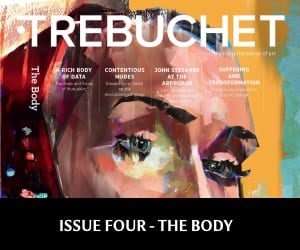[dropcap style=”font-size:100px; color:#992211;”]P[/dropcap]ersonal and societal transformation are channelled directly through the body of the artist in the ritualistic works of Bert Gilbert.
Gilbert’s interdisciplinary works include performance, costume, photography, fetishistic objects and 2D works. Not afraid to broach sexuality and obsession, she has gained a reputation for pushing the audience to confront underlying desires and taboo.
“Bert is London’s mistress of bucking trends and blushing cheeks.” Clare Considine, Le Cool
There are allusions to Jungian analytical psychology perhaps most obviously in the works Shadows of my Former Self and Animus, and to alchemy and symbolism throughout the artist’s practice.
“Her process is one of re-discovering a universal ‘Sacred Heritage’, the foundation of primordial cosmologies (Mircea Eliade: Rites and Symbols of Initiation) witnessed within myth, nature rituals, folkloric storytelling and music.” Artist website
The attitude, frankness and originality of the artist makes her a highly potent force and this is sadly a quality which is often lacking in an increasingly po-faced art world. Her performances can be seen as essential interventions, calling for malleability in a congealing culture.
How do you define the body?
I see the body as visceral and multilayered: emotional, spiritual, physical, sexual, sacred and profane. A portal/juncture to the past the present and the future. A house of memories, a record of time, punctuated and scarred by the experiences, the interruptions, the rites of passage we experience through pleasure and pain. The human body as the microcosm of the Earth and the Earth as the macrocosm of the human body.
My practice explores the internal externalised and vice versa; the relationship between the body and the mind, dislocating and reconstituting parts of the body and using these fragments as a vehicle to form a visual language. My particular fetish is the skin, and I explore this in multiple ways within my practice: The Fourskins of the Apocalypse (2016) are alchemical second-skinsuits for “ritual sacrifice and religious raves”. The Necro-suit is based on Aztec priests that used to flay their sacrificial victims and wear the skin until it flaked off. The Maenad-Medusa, a hybrid of Dionysus’s female followers (often referred to as “the raving ones”) who, high on a mixture of wine and weed, used to run on a full moon into the forest and rip the skin of anyone that they came into contact with, man or beast.
The challenges are to make work that, although rooted in a personal expression, acts as a meeting point for others to experience a physical representation of the intangible concept of spirit/collective consciousness. The rediscovering of what Mircea Eliade calls a universal ‘sacred heritage’, the foundation of primordial cosmologies witnessed within myth, nature rituals, folkloric storytelling and music.
In what way do you feel you’ve pushed your conception and application of the body?
My work is physically enduring, time-consuming and ritualised, transferring the energy of the making into the final pieces…
Read this article in full in Trebuchet 4 – The Body

Michael Eden is a visual artist, researcher and writer at the University of Arts London exploring relationships between monstrosity, subjectivity and landscape representation.



















